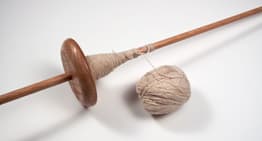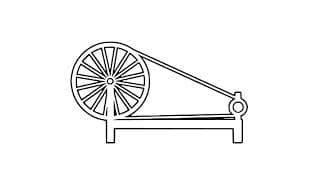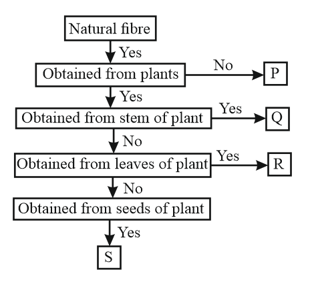Anil Ahlawat Solutions for Chapter: Fibre to Fabric, Exercise 2: EXERCISES
Anil Ahlawat Science Solutions for Exercise - Anil Ahlawat Solutions for Chapter: Fibre to Fabric, Exercise 2: EXERCISES
Attempt the free practice questions on Chapter 2: Fibre to Fabric, Exercise 2: EXERCISES with hints and solutions to strengthen your understanding. NSO Science Olympiad Workbook Grade 6 solutions are prepared by Experienced Embibe Experts.
Questions from Anil Ahlawat Solutions for Chapter: Fibre to Fabric, Exercise 2: EXERCISES with Hints & Solutions
Refer to the given figures, X and Y and select the correct statement regarding them.


X Y
Refer to the given flow chart and select the incorrect option regarding P, Q, R and S.

The different steps of processing of cotton are given randomly.
(i) Spinning
(ii) Weaving
(iii) Ginning
(iv) Carding
(v) Combing
Which of the following represents the correct sequence of steps?
Refer to the given dichotomous key and select the incorrect statement regarding P, Q, R, S and T.
(i) (a) It is a natural fibre. - Go to (ii)
(b) It is a man-made fibre.
(ii) (a) Fibre is obtained from plants. – Go to (iii)
(b) Fibre is obtained from animals. – Go to (iv)
(iii) (a) Fibre obtained from stem.-
(b) Fibre obtained from the seed. –
(iv) Fibre obtained by killing source organism. –
(b) Fibre obtained without killing source organism. –
Read the following characteristics of the fibre and identify them.
(i) It is a breathable fabric, i.e. the air can pass in and out through its fibres.
(ii) Each fibre is made up of layers of coiled cellulose springs.
(iii) It has moisture-absorbing quality.
(iv) It has a natural twist that makes it suitable for spinning.
